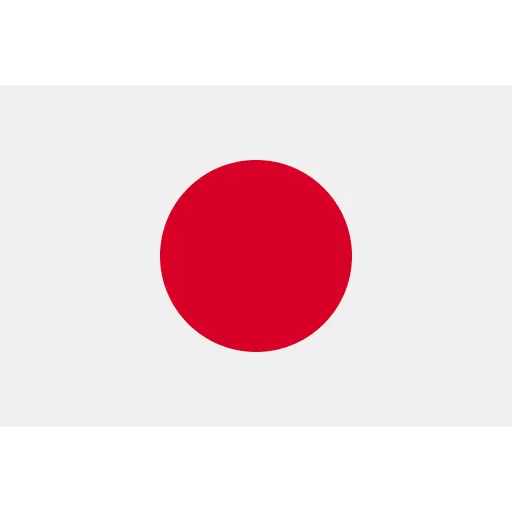5 konbini foods you must taste in Japan
In a busy society like Japan, food and drink must be available 24-7 for tourists, businessmen and everyone else. For that reason, there are drink vending machines (vending machines) to be found on most street corners, whether you are in the middle of the streets of Tōkyō or on top of a mountain.
The Japanese convenience stores, konbini , are also created to be available to anyone who may need it, and a trip to konbini is actually almost worth the trip to Japan in itself. In a way, Konbini can be compared to a kiosk - only more fancy and with far more goods and options. Here you will find e.g. a sea of Japanese specialties which vary according to the different stores, chains, regions and seasons. You will also find other things than food in a konbini such as dessert, various drinks, magazines and necessities such as underwear. Yes, you can withdraw money, print and even buy event tickets in a konbini .
Top 5 konbini foods
But what exactly are konbini foods? In short, it is a form of food, snack or other edible that you can buy in a convenience store. It is delicious, cheap - and of course available. The prices in konbini are admittedly slightly higher than in the supermarkets, but on the other hand the food is ready to eat immediately, very convenient and good on-the-go . And then there is almost always a konbini nearby.
In this guide, we've included our top 5 of quick "meals" that you can find in most convenience stores, the three biggest chains being 7-Eleven, Family Mart, and Lawson. There is often one of these konbini nearby in the cities. If you are close after a long day of sightseeing, there is a hot dinner ready to take to the hotel room for a little relaxation. Super easy! Depending on when you are in Japan, you can also try a seasonal dish such as warm oden in winter or chewy sakura mochi in spring. Anyways, let's dive into the wonderful world of konbini food. Then all that's left is to say welcome, " itadakimasu "!

(https://blog.gaijinpot.com/5-things-didnt-know-buy-konbini/)
1. Onigiri
Maybe you know onigiri from anime or Instagram. An onigiri can best be described as a triangular rice ball with filling wrapped in seaweed, and there are countless varieties with different types of fish, konbu and much more. You can actually put almost anything in, but in my opinion it tastes best with a creamy centre.
With its smart packaging, the lightly salted nori seaweed around the rice is kept delicious and crispy, and you prevent it from becoming sloppy. When the package is opened with the three steps, the almost creamy rice and seaweed meet in a fantastic combination. My personal favorite onigiri are the ones with fish. Try a tuna and Japanese mayo (yes, it's a little different from our mayo), one with fish roe like tarako / mentaiko or with shrimp. Um! The best thing is that most konbini almost always have the classic here in the fridge, regardless of what time of day you come, but if you come around lunchtime they are often completely fresh.
Yes, in short, onigiri is a rich, delicious and quick mouthful, which is good on-the-go on a trip in Japan and can be obtained everywhere. And then it costs just over 100 yen, which corresponds to approx. 5-10 kroner. That's a lunch worth paying for! Depending on how much you eat, usually 1-2 pcs. to be enough. And then you can just grab a bright green soft drink melon soda with you on your trip!


(https://www.nippon.com/en/guide-to-japan/gu013002/)
2. Japanese sandwiches
It might sound fairly basic for a 7-Eleven to have sandwiches on the menu, but Japanese sandwiches can do anything. The first sandwich I tried in Japan was an ichigo sando (strawberry sandwich) and let me tell you, it was an absolutely amazing experience to sink my teeth into the chalky white bread with whipped cream and perfect, sweet strawberries. The white bread, which I normally never eat in Denmark, just melted in my mouth. And I've had similar experiences many times since with other konbini sandwiches.
But to finish the ichigo sando adventure above, since my first trip I have been looking for a strawberry sandwich in the Japanese konbini for a long time. But since strawberries are mainly considered a Christmas fruit in Japan (probably because of the red color), it's easiest to get hold of one during the winter months. So at least you know :-)
If you are instead looking for something for your lunch from the savory cuisine, try katsu sando. It is deep-fried, crispy pork cutlet, tonkatsu , with katsu sauce and often added Japanese mayo - of course also with heavenly white bread on the outside. If you want to try your hand at Japanese katsu , you can try our recipe for katsudon donburi rice bowl . Maybe you can try making your own katsu sando at home.
There are many other varieties of sando in the Japanese konbini , and each chain makes it in their own unique way, so taste it to see which one you like best. In addition to the two sandos mentioned above, I can also recommend the egg sandwich tamago sando (here you can really talk about something melting in your mouth) or a classic sandwich with ham and salad. Try yourself out. The price is often around ¥200-300 (between DKK 10-20). Enjoy!

(https://themimiodyssey.com/7-eleven-japan/)
3. Fried chicken
Since the dawn of time (okay, maybe not quite that long), there has been a debate about which Japanese konbini chain makes the best fried chicken, also called karaage . No matter where you buy it, it is a must try in Japan. You can actually learn to make your own karaage with our recipe right here . Then you can taste for yourself why it is on the list here :-)
In most konbini , a delicious box or bag of hot karaage costs just over ¥ 200 (DKK 12). It comes in many variants and is available e.g. with cheese filling and in a spicy, red version. Experiment with different flavors, but I recommend trying the regular crunchy and juicy karaage to start with. Uhm, delicious juicy chicken with a nice crispy, crunchy crust.
Because karaage is bought at the checkout from the hot counter, you can try your hand at saying " karaage " or " chikin " and possibly point to the chosen chicken (although it is not considered very nice to do in Japan). It used to be easy to find out. And you won't regret your purchase!


(https://ifbth.com/japanese-convenience-store-fried-chicken-guide/)
4. Bento
You may also have seen this classic in Japanese anime or movies. Bentō is a packed lunch that can be made at home or bought in stores. In the Japanese konbini you can find an extended range of different types of bentō . A classic like makunouchi bentō often contains r ice, grilled fish, eggs, pickled vegetables, meat such as karaage and a pickled plum, umeboshi. You can put together your bentō however you like, but what many have in common is that there is some form of rice at the bottom and vegetables, meat and other things on top. The price of a bentō box is often just under ¥500 (under DKK 30) for these.
You can also include freshly packed donburi (rice bowls) such as oyakodon (chicken and egg over rice), katsudon (deep-fried pork with egg over rice), gyūdon (beef over rice), rice dishes with curry and pasta dishes in the bentō category. You can always have your dishes heated up in a konbini if you want to enjoy one of these hot. Uhm, I could eat a batch of nice hot katsudon right now! But if you want to try a completely classic, standard bentō box, I would recommend one with rice and fish such as makunouchi bentō .
You can also try making your own Japanese-inspired packed lunch for e.g. a picnic trip. In fact, many Japanese housewives go to great lengths to make the most beautiful bentō lunch boxes for their children when they go to school. In Japanese retail stores and in 100-yen stores such as Daiso, you can buy small cutters to make bears or other things in e.g. seaweed to put on top of the rice in his bentō . You can really be creative here! Compared to purchased bentō , large stations sell so-called ekiben (translated "station bentō ") for your train ride. This more luxurious bentō can be found in various unique varieties across Japan.


(https://commons.wikimedia.org/wiki/File:Shiso_wakame_gohan_makunouchi_bento_of_7-Eleven_in_Japan.jpg and https://www.nippon.com/en/guide-to-japan/gu013002/)
5. Noodles
Many probably associate Japanese food with cup noodles and delicious hot noodle dishes such as ramen and yakisoba , and you can also find them in a konbini . There is a huge selection of instant noodles, or cup noodles as we call them. A much larger selection than in Denmark. Try e.g. a round of delicious yakisoba , noodles low in calories or a limited matcha flavored cup noodle. If you haven't tried yakisoba yet, I think it's a must . The price of cup noodles is often around ¥100-200 (approx. DKK 5-12), but they are also available cheaper and more expensive.
Also try one of the more "fresh" noodle dishes with soba noodles. In the summer they are available cold and in the winter in a nice warm version. Because they are not packed like cup noodles and thus fresher, they are often around ¥500 (almost DKK 30).
The larger konbini also have a place with side seats inside (often one floor above or right at the entrance), where there is an electric kettle with hot water for customers' cup noodles. If there is no space, you can take your food outside, but as we have pointed out in another post , it is rude to walk while eating. However, you are welcome to stand and eat :-)

(https://gigazine.net/news/20161230-toshikoshi-soba-conveni/)
Whew, writing about konbini food made me absolutely hungry! It's really something I miss having around here in Denmark. Remember that if you see something exciting in a konbini that you want to try, go for it. As with the ichigo sando story, you can be unlucky that an item is gone, so avoid regretting that you bought it.
There are many other konbini foods that I could write pages up and down about. Eg. I also think you should try the many different types of sweets and snacks on the shelves. Also try ichigo daifuku ( mochi rice cake with strawberries), dorayaki (sweet pancake with red bean paste in it), melon pan (bread with a melon-like appearance), sushi or nikuman (soft bun with meat filling). So yes, there are plenty of food adventures to be had here.
I have allowed myself to collect a few Japanese translations that may be good to know before entering a konbini :
- 新美国= new product
- 季節限定 = seasonal product
- Limited time limit = limited time item
- 生= raw
- 焼く = grilled
- フライ= deep fried
- 甘い = cute
- がたかい = warm
- つめたい = cold
Do you have a konbini snack or food item that I haven't included in this guide that just HAS to be on the list? Then finally write it in a comment below. Thank you for reading along. See you, mata nee !






